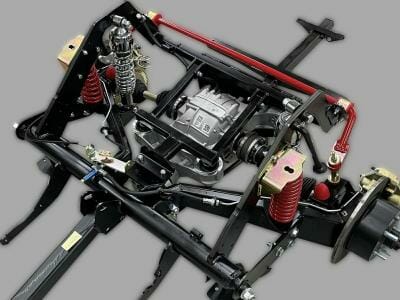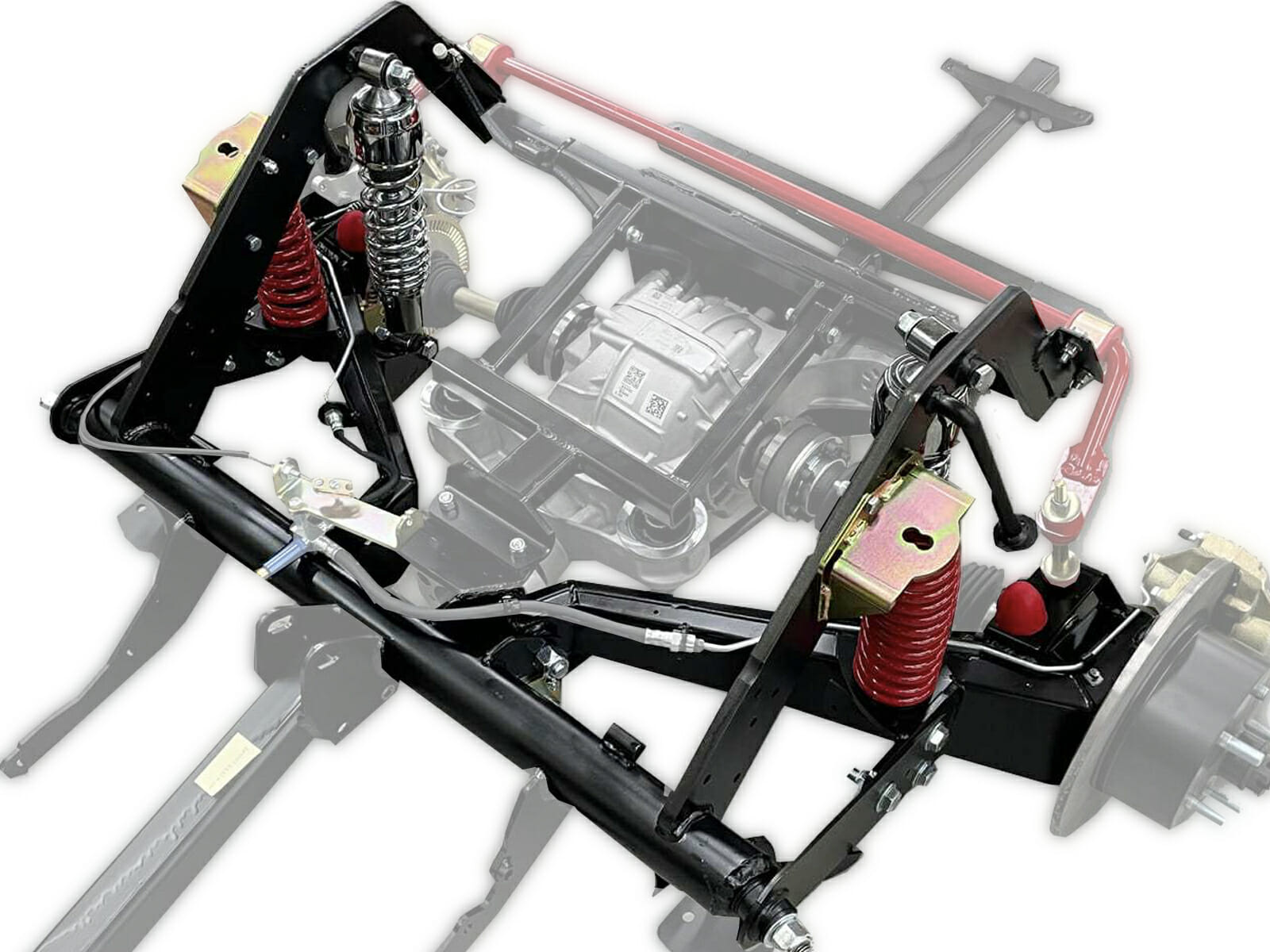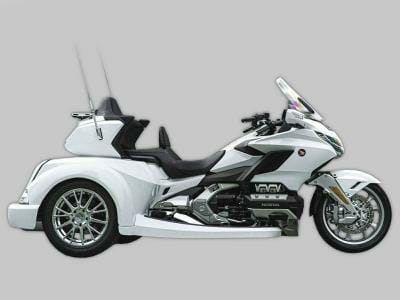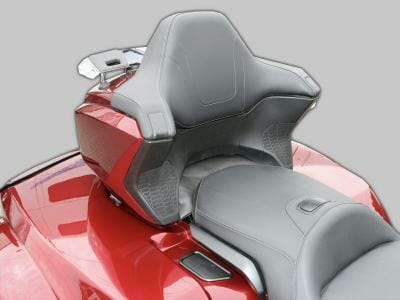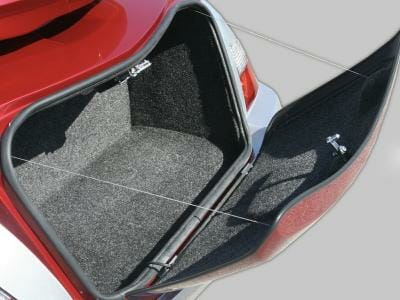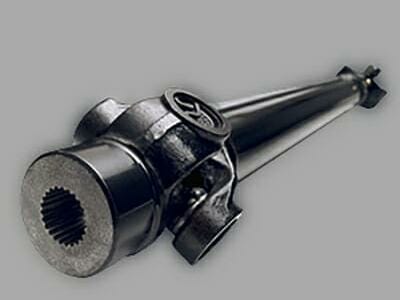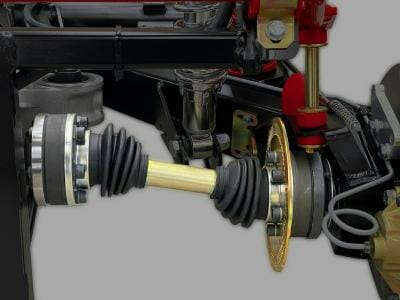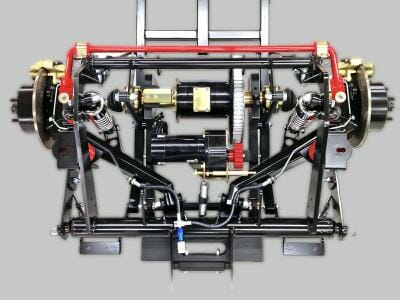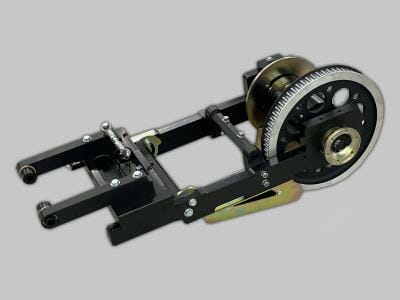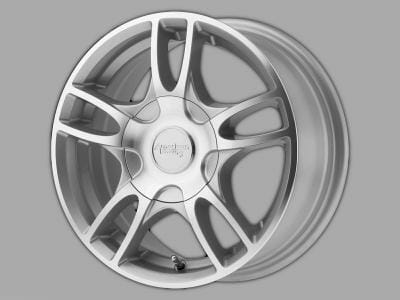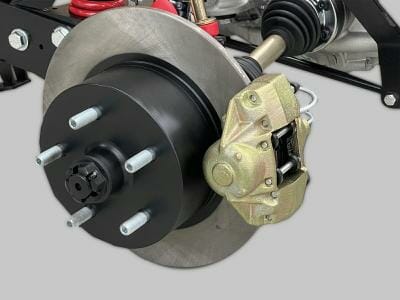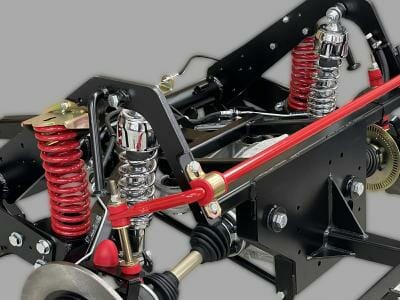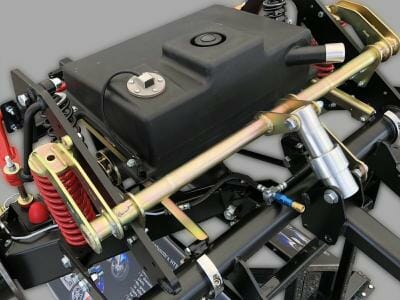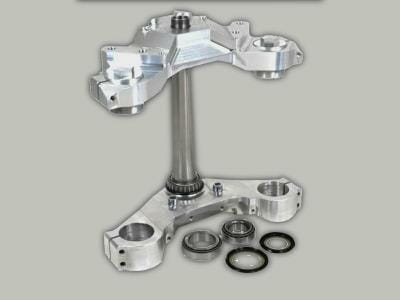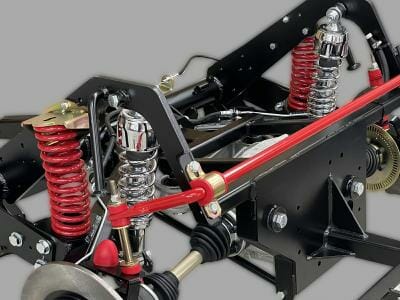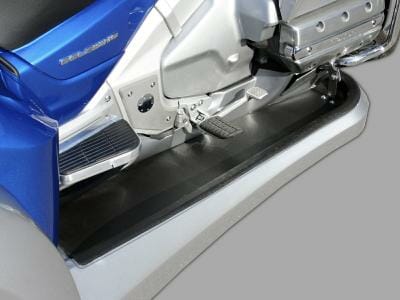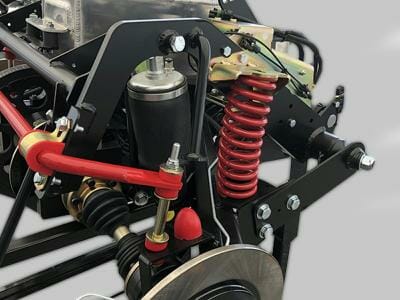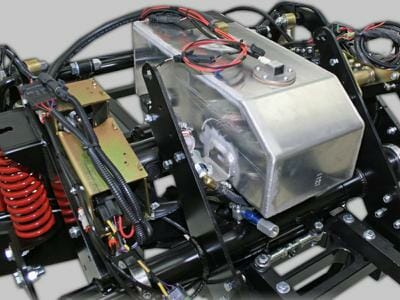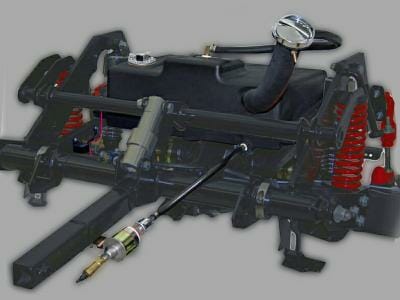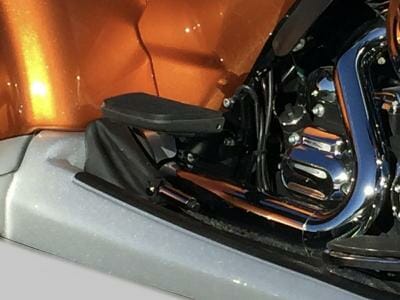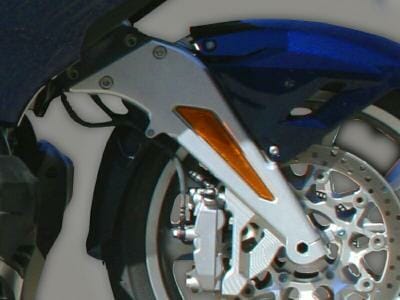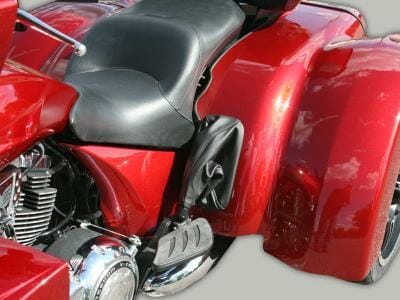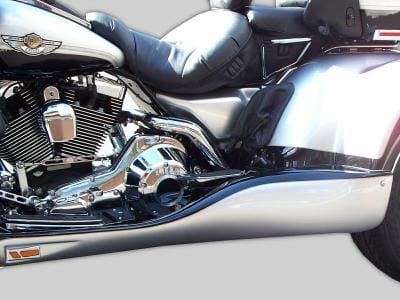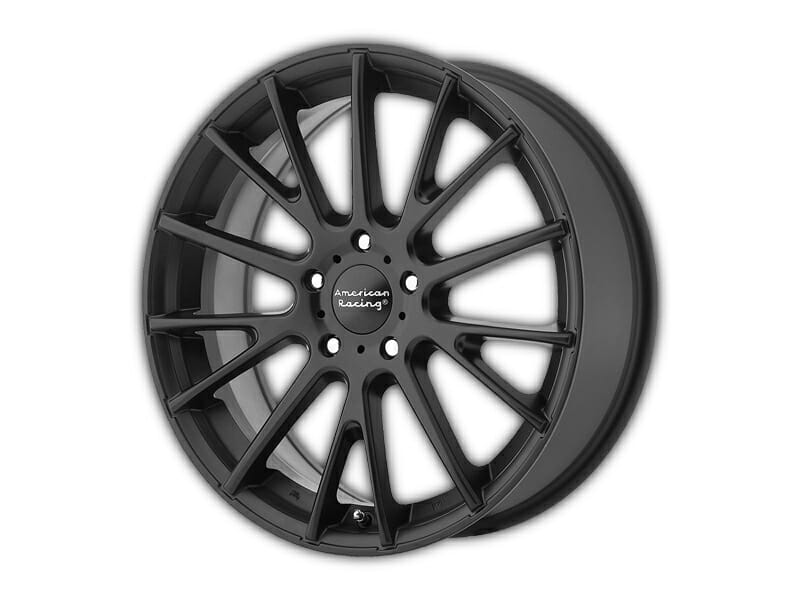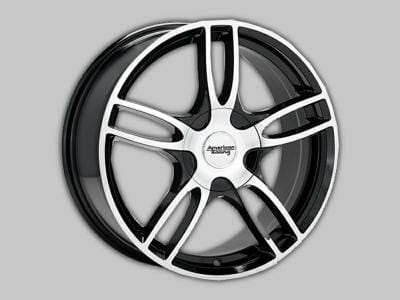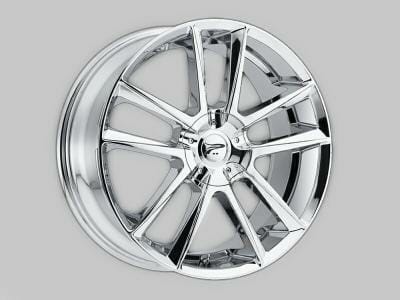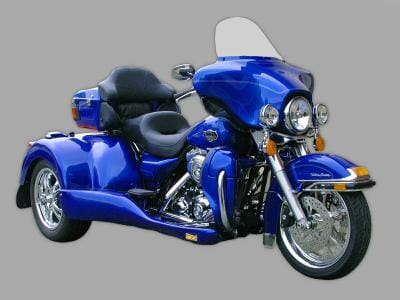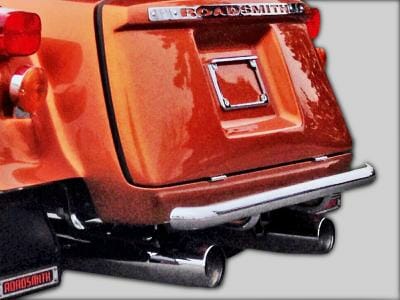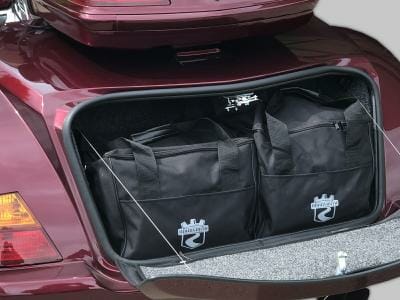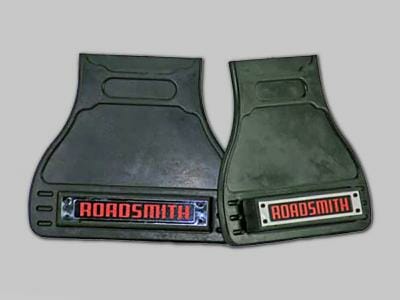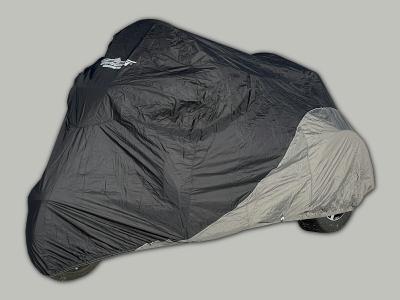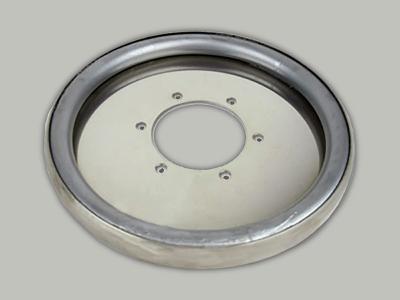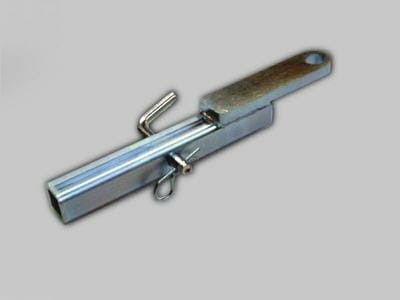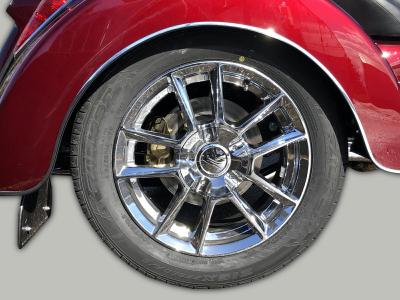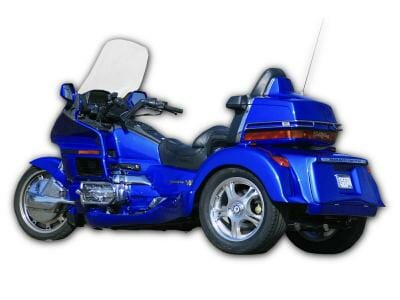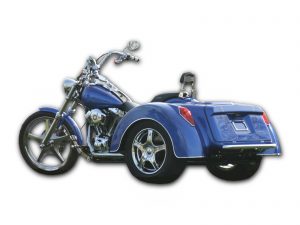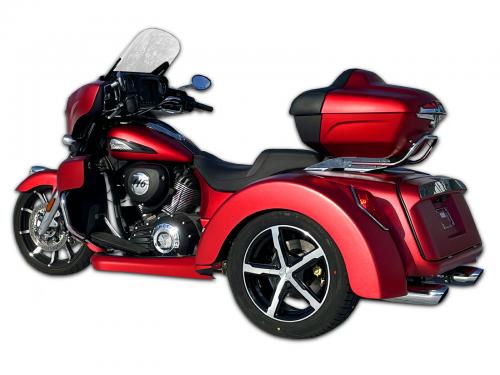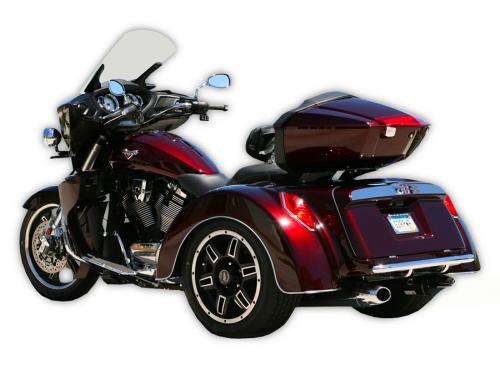The smooth ride of the ROADSMITH Shaft-Drive Models (HTX1800, HTS1800, HT1500, HSC1500 and HSCR1500) are primarily due to our innovative, fully-independent rear suspension system that offers a ride like no other trike on the market today!
ROADSMITH was the first to offer independent suspension for trike conversions kits over 25 years ago and the cynics said it would never work! Well, there’s no two ways around it: They’re eating those words today…
Talk to anyone who has actually ridden an independent-rear-suspension trike vs a solid-axle-system trike for any period of time and ask them which one rode and handled better; they won’t deny that the independent-rear-suspension machine always rides nicer and corners exponentially better. And it’s those same people who said it would never work 25-years-ago who now offer some variation of IRS on their trikes today! What do they say, “Imitation is the greatest form of flattery!”
IRS is the way manufacturers of cars, SUVs, and ATVs have been going for half a century now and continue to go; and for good reason. We at ROADSMITH have always said that our trikes are built with a purpose, “Touring in comfort.” And to do that there’s no question that IRS is a must-have; which is why every conversion kit ROADSMITH makes today come standard with fully-independent rear suspension from the factory!
Design
Featuring a multi-point mounting setup that our chassis directly to the bike’s frame, the ROADSMITH rear-end design actually strengthens the bike’s frame as well as dissipating the added stress that comes with the additional weight and improved tire grip (from rear tires’ much larger contact patches) of a trike.
All ROADSMITH kits attach to existing mounting points on the frame, such as the upper shock mounts and the swingarm mounting area. Another feature of the trailing-arm-type independent suspension that we use is the fact that there are very few moving parts. Featuring, literally, only two pivot points on each trailing arm, this eliminates any adjustments or maintenance requirements. Are there more complicated ways to design a suspension system? Sure…but why?
How It Works
While actually quite complicated, there is a somewhat easier way to explain just why Independent Rear Suspension is so important on trikes! So hang in there with us for a minute…
First, start by picturing you and your trike riding straight-up-and-down on a totally-flat road; you are putting absolutely no lean through the machine whatsoever. This means your trike is perfectly square to the ground, thus eliminating several extra, and frankly very-confusing variables from our physics of our equation…
Now picture your right wheel, and no other part of the machine, encountering a 2-inch-tall bump. What’s going to happen at this point? Well, so far, that’s an easy one to answer: Your outside-right wheel would be sent upwards with, at the very minimum, the amount of energy required for it to go up-and-over that 2-inch bump. And while I know the amount of energy sent through the right side of the machine is, among other things, directly related to the speed at which the bump is hit, the angle at which it is encountered, the shape of the bump itself, and so on… But for this demonstration those are not nearly as important as the end result: The wheel trailing upward and over the bump. However, as we go, just keep in mind that more speed always equals more energy.
So, we have established that as a direct result of the tire making contact with said bump, energy is now being produced in not only the forward direction, but also now in the nearly-vertically-upward direction. And because, like we said, the trike is still also traveling horizontally forward, the vertically-upward-energy from the 2-inch bump first goes through right-side tire, then wheel, then suspension, and finally the main chassis of the trike, with each part of our layman’s equation dissipating some percentage of the impact (the law of conservation of energy and mass proves that the energy must go somewhere!). How well each of these dissipates that energy before it reaches you the rider is a direct result two main variables: A) The material from which each item is made and B) the design of each item it encounters.
Hence, the key to knowing just how much this will upset the machine’s ride quality, or what you as a rider ‘feel’ after hitting this bump is to look at what sits between the rider and the tires that impacted the bump. And in the case of ANY trike conversion kit made today, that would be: A relatively-stiff, automotive-spec rubber tire mated to an equal-sized, extremely-stiff alloy wheel, which then sits attached to an even stiffer stainless-steel axle. This, finally, is held to the chassis via each manufacturer’s unique suspension system.
So, as you can see, nearly everything but the tire and suspension system are made up of solid, relatively immoveable metal, which will dampen only a tiny fraction of any energy put through it. And while the rubber tire dampens a small percentage of said energy, in the grand scheme of things, it is extremely small and all trike’s will likely be using very similar rubber. This leaves just the suspension system insulating the rider from the bump’s energy! So…Now do you see why the trike’s rear suspension design is so important?
With a solid-axle-design, while it does have suspension, said axle connects both sides and thus mean both shocks must move in unison. And while that design works just fine if both wheels hit the exact same size bump at the exact same moment in time, let’s be honest: How often does that ever happen in the real world? Almost all real-world situations are just like the aforementioned scenario, where only one wheel hits an obstruction, or if they both do, it’s at different moments in time, or different size obstructions in the road – or both.
But back to our little scenario of only the outside-right-wheel hitting a 2-inch bump. With a solid-axle-design that upward-energy has to go somewhere and cannot be dissipated by only the tire and wheel, but because both sides are connected, the energy of the bump will force both wheels upward.
And because, in this situation, the left wheel is riding on a flat surface, the result is unwanted suspension movement on the trike’s opposite side, thus making the entire machine ‘rock’ from side-to-side, as well as up-and-down, which is why the rider feels almost all of the energy produced by the obstruction that is hit.
Now, depending on the size of the obstruction and the speed at which it is hit, and the resulting amount of energy sent through the trike’s suspension and chassis, at the very minimum the rider feels an unsettling ‘rocking’ motion, while at the worst the machine bounces the rider around violently enough that he or she totally loses control.
However, with ROADSMITH‘s IRS, the energy is able to be absorbed solely by the right-side tire/wheel/suspension assembly, allowing the left-side assembly to stay firmly planted on the ground, in turn greatly limiting, or even totally-eliminating the amount of energy that is sent into the machine’s chassis and, in turn, you as the rider.
So, why would anyone use a solid-axle design anymore? Well, only one company still does, which by itself says a lot, however this company happens to still be the single biggest producer of trikes in the world today (I will not name them by name, but I‘m sure you can guess who it is). And I’m sure you can also guess the sole reason why they stay with this antiquated design: Cost!
It’s much cheaper and easier for them to continue to produce the same 40-year-old design they have since Day 1, despite the glaringly-obvious flaws in it, because it keeps their profit margins up.
Technology has improved a lot in the short history of trikes, something we at ROADSMITH have always taken pride in being a leader in. However, for some companies their board member’s bonuses are still more important than improving their product.

